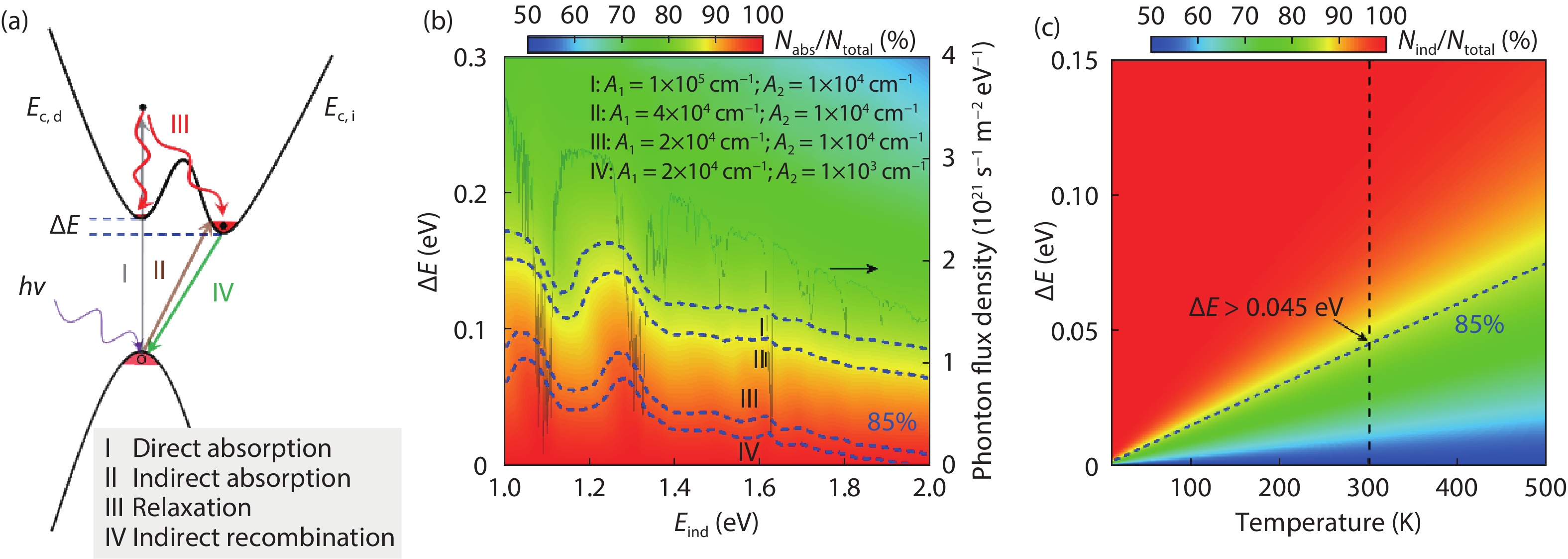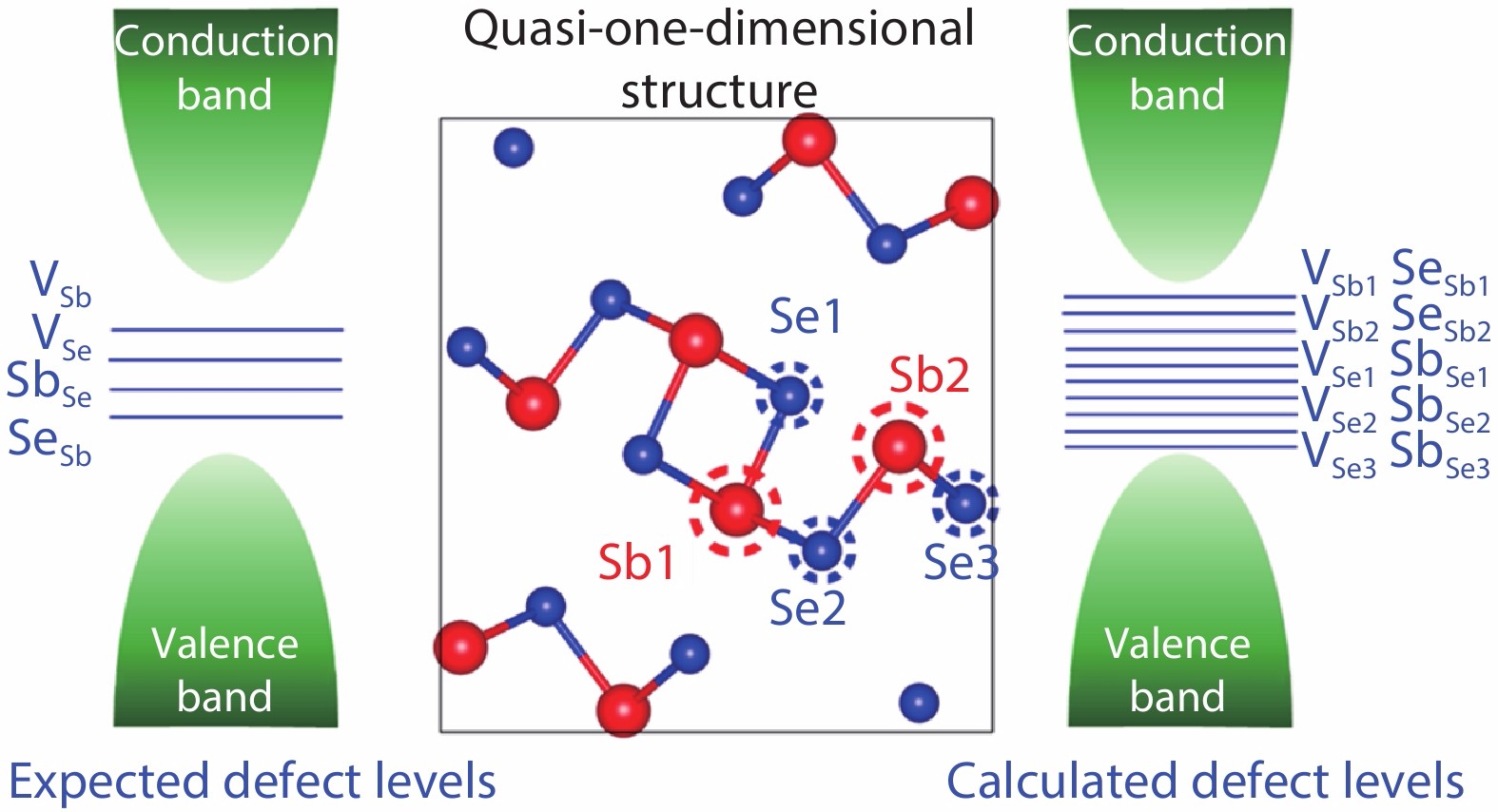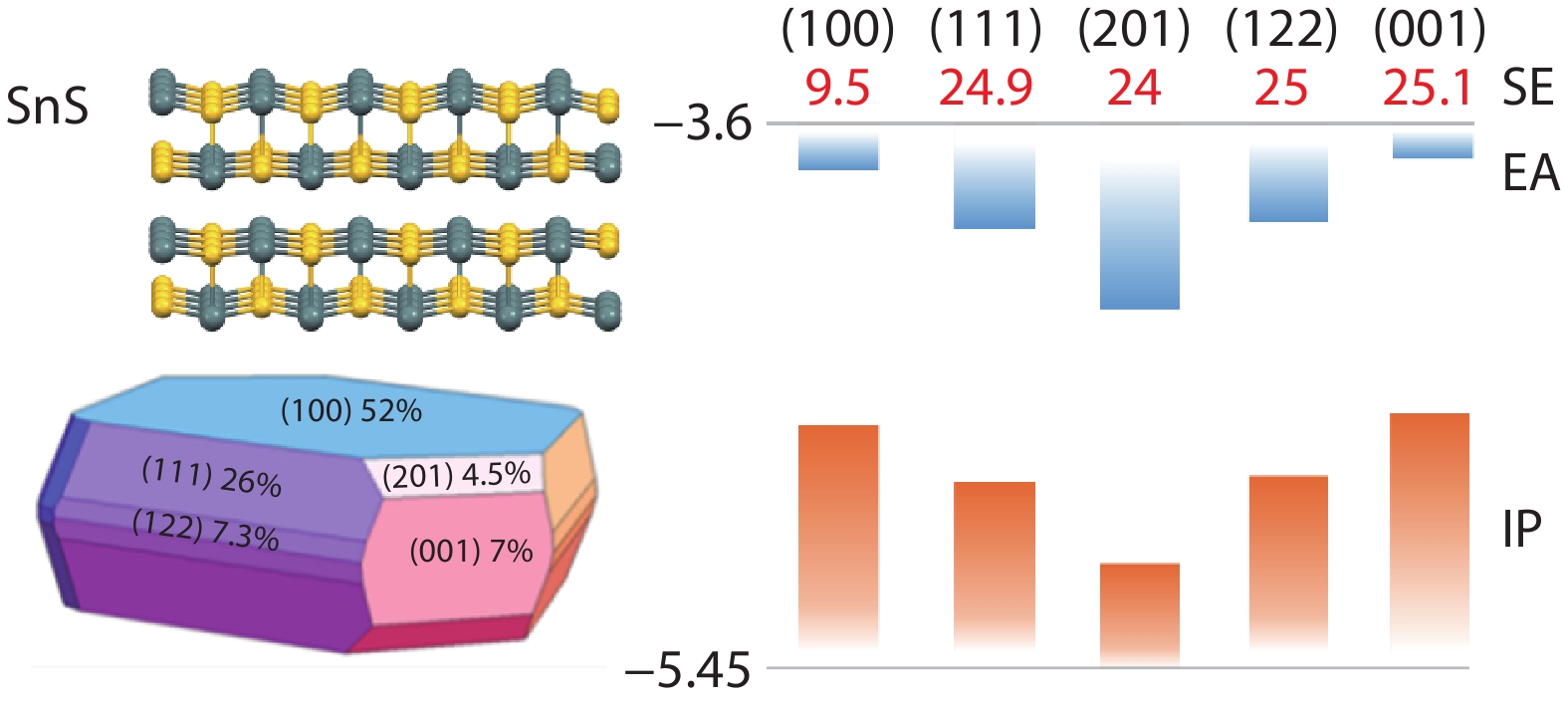| Citation: |
Rokas Kondrotas, Chao Chen, XinXing Liu, Bo Yang, Jiang Tang. Low-dimensional materials for photovoltaic application[J]. Journal of Semiconductors, 2021, 42(3): 031701. doi: 10.1088/1674-4926/42/3/031701
****
R Kondrotas, C Chen, X X Liu, B Yang, J Tang, Low-dimensional materials for photovoltaic application[J]. J. Semicond., 2021, 42(3): 031701. doi: 10.1088/1674-4926/42/3/031701.
|
Low-dimensional materials for photovoltaic application
DOI: 10.1088/1674-4926/42/3/031701
More Information
-
Abstract
The photovoltaic (PV) market is currently dominated by silicon based solar cells. However technological diversification is essential to promote competition, which is the driving force for technological growth. Historically, the choice of PV materials has been limited to the three-dimensional (3D) compounds with a high crystal symmetry and direct band gap. However, to meet the strict demands for sustainable PV applications, material space has been expanded beyond 3D compounds. In this perspective we discuss the potential of low-dimensional materials (2D, 1D) for application in PVs. We present unique features of low-dimensional materials in context of their suitability in the solar cells. The band gap, absorption, carrier dynamics, mobility, defects, surface states and growth kinetics are discussed and compared to 3D counterparts, providing a comprehensive view of prospects of low-dimensional materials. Structural dimensionality leads to a highly anisotropic carrier transport, complex defect chemistry and peculiar growth dynamics. By providing fundamental insights into these challenges we aim to deepen the understanding of low-dimensional materials and expand the scope of their application. Finally, we discuss the current research status and development trend of solar cell devices made of low-dimensional materials.-
Keywords:
- low-dimensional materials,
- photovoltaic,
- absorption,
- defect,
- anisotropy
-
References
[1] Philipps S. Photovoltaics report. Fraunhofer Institute for Solar Energy Systems, 2019[2] Green M A, Hishikawa Y, Dunlop E D, et al. Solar cell efficiency tables (version 52). Pro Photovolt, 2018, 26(7), 427 doi: 10.1002/pip.3040[3] Alharbi F, Bass J D, Salhi A, et al. Abundant non-toxic materials for thin film solar cells: Alternative to conventional materials. Renew Energ, 2011, 36(10), 2753 doi: 10.1016/j.renene.2011.03.010[4] Jean J, Brown P R, Jaffe R L, et al. Pathways for solar photovoltaics. Energy Environ Sci, 2015, 8(4), 1200 doi: 10.1039/C4EE04073B[5] Lei H, Chen J, Tan Z, et al. Review of recent progress in antimony chalcogenide-based solar cells: Materials and devices. Solar RRL, 2019, 3(6), 1900026 doi: 10.1002/solr.201900026[6] Mavlonov A, Razykov T, Raziq F, et al. A review of Sb2Se3 photovoltaic absorber materials and thin-film solar cells. Sol Energy, 2020, 201, 227 doi: 10.1016/j.solener.2020.03.009[7] Wong L H, Zakutayev A, Major J D, et al. Emerging inorganic solar cell efficiency tables (Version 1). J Phys: Energy, 2019, 1(3), 032001 doi: 10.1088/2515-7655/ab2338[8] Yu L, Kokenyesi R S, Keszler D A, et al. Inverse design of high absorption thin-film photovoltaic materials. Adv Energy Mater, 2013, 3(1), 43 doi: 10.1002/aenm.201200538[9] Phillips L J, Savory C N, Hutter O S, et al. Current enhancement via a TiO2 window layer for CSS Sb2Se3 solar cells: Performance limits and high VOC. IEEE J Photovolt, 2019, 9(2), 544 doi: 10.1109/JPHOTOV.2018.2885836[10] Li Z, Liang X, Li G, et al. 9.2%-efficient core-shell structured antimony selenide nanorod array solar cells. Nat Commun, 2019, 10(1), 125 doi: 10.1038/s41467-018-07903-6[11] Liu C, Wang L, Tang Y, et al. Vertical single or few-layer MoS2 nanosheets rooting into TiO2 nanofibers for highly efficient photocatalytic hydrogen evolution. Appl Catal B, 2015, 164, 1 doi: 10.1016/j.apcatb.2014.08.046[12] Chuang H J, Chamlagain B, Koehler M, et al. Low-resistance 2D/2D ohmic contacts: A universal approach to high-performance WSe2, MoS2, and MoSe2 transistors. Nano Lett, 2016, 16(3), 1896 doi: 10.1021/acs.nanolett.5b05066[13] Zhao M, Su J, Zhao Y, et al. Sodium-mediated epitaxial growth of 2D ultrathin Sb2Se3 flakes for broadband photodetection. Adv Funct Mater, 2020, 30(13), 1909849 doi: 10.1002/adfm.201909849[14] Chen Z G, Shi X, Zhao L D, et al. High-performance SnSe thermoelectric materials: Progress and future challenge. Prog Mater Sci, 2018, 97, 283 doi: 10.1016/j.pmatsci.2018.04.005[15] Wu T, Zhang H. Piezoelectricity in two-dimensional materials. Angew Chem Int Ed, 2015, 54(15), 4432 doi: 10.1002/anie.201411335[16] Niu S, Joe G, Zhao H, et al. Giant optical anisotropy in a quasi-one-dimensional crystal. Nat Photonics, 2018, 12(7), 392 doi: 10.1038/s41566-018-0189-1[17] Tian H, Tice J, Fei R, et al. Low-symmetry two-dimensional materials for electronic and photonic applications. Nano Today, 2016, 11(6), 763 doi: 10.1016/j.nantod.2016.10.003[18] Donnay J D H, Harker D. A new law of crystal morphology extending the law of Bravais. Am Mineral, 1937, 22(5), 446[19] Brandt R E, Poindexter J R, Gorai P, et al. Searching for “defect-tolerant” photovoltaic materials: Combined theoretical and experimental screening. Chem Mater, 2017, 29(11), 4667 doi: 10.1021/acs.chemmater.6b05496[20] Othonos A. Probing ultrafast carrier and phonon dynamics in semiconductors. J App Phys, 1998, 83(4), 1789 doi: 10.1063/1.367411[21] Hutter E M, Gélvez-Rueda M C, Osherov A, et al. Direct–indirect character of the bandgap in methylammonium lead iodide perovskite. Nat Mater, 2016, 16, 115 doi: 10.1038/nmat4765[22] Saliba M, Correa-Baena J P, Wolff C M, et al. How to make over 20% efficient perovskite solar cells in regular (n–i–p) and inverted (p–i–n) architectures. Chem Mater, 2018, 30(13), 4193 doi: 10.1021/acs.chemmater.8b00136[23] Walsh A, Zunger A. Instilling defect tolerance in new compounds. Nat Mater, 2017, 16, 964 doi: 10.1038/nmat4973[24] Vidal J, Lany S, d’Avezac M, et al. Band-structure, optical properties, and defect physics of the photovoltaic semiconductor SnS. Appl Phys Lett, 2012, 100(3), 032104 doi: 10.1063/1.3675880[25] Huang Y, Wang C, Chen X, et al. First-principles study on intrinsic defects of SnSe. RSC Advances, 2017, 7(44), 27612 doi: 10.1039/C7RA03367B[26] Han D, Du M H, Dai C M, et al. Influence of defects and dopants on the photovoltaic performance of Bi2S3: first-principles insights. J Mater Chem A, 2017, 5(13), 6200 doi: 10.1039/C6TA10377D[27] Huang M, Xu P, Han D, et al. Complicated and unconventional defect properties of the quasi-one-dimensional photovoltaic semiconductor Sb2Se3. ACS Appl Mater Inter, 2019, 11(17), 15564 doi: 10.1021/acsami.9b01220[28] Qiao J, Kong X, Hu Z X, et al. High-mobility transport anisotropy and linear dichroism in few-layer black phosphorus. Nat Commun, 2014, 5(1), 4475 doi: 10.1038/ncomms5475[29] Zhou Y, Wang L, Chen S, et al. Thin-film Sb2Se3 photovoltaics with oriented one-dimensional ribbons and benign grain boundaries. Nat Photonics, 2015, 9(6), 409 doi: 10.1038/nphoton.2015.78[30] Novoselov K S, Mishchenko A, Carvalho A, et al. 2D materials and van der Waals heterostructures. Science, 2016, 353(6298), aac9439 doi: 10.1126/science.aac9439[31] Welch A W, Baranowski L L, Zawadzki P, et al. Accelerated development of CuSbS2 thin film photovoltaic device prototypes. Pro Photovoltaics, 2016, 24(7), 929 doi: 10.1002/pip.2735[32] Kirchartz T, Rau U. What makes a good solar cell. Adv Energy Mater, 2018, 8(28), 1703385 doi: 10.1002/aenm.201703385[33] Gilbert L R, Van Pelt B, Wood C. The thermal activation energy of crystalline Sb2Se3. J Phys Chem Solids, 1974, 35(12), 1629 doi: 10.1016/S0022-3697(74)80175-7[34] Chen Y, Sun Y, Peng J, et al. Tailoring organic cation of 2D air-Stable organometal halide perovskites for highly efficient planar solar cells. Adv Energy Mater, 2017, 7(18), 1700162 doi: 10.1002/aenm.201700162[35] Tsai H, Nie W, Blancon J C, et al. High-efficiency two-dimensional Ruddlesden–Popper perovskite solar cells. Nature, 2016, 536, 312 doi: 10.1038/nature18306[36] Nassary M M. Temperature dependence of the electrical conductivity, Hall effect and thermoelectric power of SnS single crystals. J Alloy Compd, 2005, 398(1), 21 doi: 10.1016/j.jallcom.2005.02.025[37] Sinsermsuksakul P, Sun L, Lee S W, et al. Overcoming efficiency limitations of SnS-based solar cells. Adv Energy Mater, 2014, 4(15), 1400496 doi: 10.1002/aenm.201400496[38] Zhao L D, Tan G, Hao S, et al. Ultrahigh power factor and thermoelectric performance in hole-doped single-crystal SnSe. Science, 2016, 351(6269), 141 doi: 10.1126/science.aad3749[39] Welch A W, Baranowski L L, Peng H, et al. Trade-offs in thin film solar cells with layered chalcostibitephotovoltaic absorbers. Adv Energy Mater, 2017, 7(11), 1601935 doi: 10.1002/aenm.201601935[40] Ramasamy K, Sims H, Butler W H, et al. Mono-, few-, and multiple layers of copper antimony sulfide (CuSbS2): A ternary layered sulfide. J Am Chem Soc, 2014, 136(4), 1587 doi: 10.1021/ja411748g[41] Banu S, Ahn S J, Ahn S K, et al. Fabrication and characterization of cost-efficient CuSbS2 thin film solar cells using hybrid inks. Sol Energ Mat Sol C, 2016, 151, 14 doi: 10.1016/j.solmat.2016.02.013[42] Kautek W. Electronic mobility anisotropy of layered semiconductors: transversal photoconductivity measurements at n-MoSe2. J Phys C, 1982, 15(16), L519 doi: 10.1088/0022-3719/15/16/002[43] Chen Z, Liu H, Chen X, et al. Wafer-size and single-crystal MoSe2 atomically thin films grown on GaN substrate for light emission and harvesting. ACS Appl Mater Inter, 2016, 8(31), 20267 doi: 10.1021/acsami.6b04768[44] Evans B, Young P. Optical absorption and dispersion in molybdenum disulphide. Proc R Soc London Ser A, 1965, 284(1398), 402 doi: 10.1098/rspa.1965.0071[45] Wi S, Kim H, Chen M, et al. Enhancement of photovoltaic response in multilayer MoS2 induced by plasma doping. ACS Nano, 2014, 8(5), 5270 doi: 10.1021/nn5013429[46] Kyriakos D S, Anagnostopoulos A N. Electrical conductivity of layered GeSe related to extended faults. J App Phys, 1985, 58(10), 3917 doi: 10.1063/1.335613[47] Xue D J, Liu S C, Dai C M, et al. GeSe thin-film solar cells fabricated by self-regulated rapid thermal sublimation. J Am Chem Soc, 2017, 139(2), 958 doi: 10.1021/jacs.6b11705[48] Chakraborty B R, Ray B, Bhattacharya R, et al. Magnetic and electric properties of antimony selenide (Sb2Se3) crystals. J Phys Chem Solids, 1980, 41(8), 913 doi: 10.1016/0022-3697(80)90037-2[49] Roy B, Chakraborty B R, Bhattacharya R, et al. Electrical and magnetic properties of antimony sulphide (Sb2S3) crystals and the mechanism of carrier transport in it. Solid State Commun, 1978, 25(11), 937 doi: 10.1016/0038-1098(78)90306-X[50] Choi Y C, Lee D U, Noh J H, et al. Highly improved Sb2S3 sensitized-inorganic–organic heterojunction solar cells and quantification of traps by deep-level transient spectroscopy. Adv Function Mater, 2014, 24(23), 3587 doi: 10.1002/adfm.201304238[51] Wang X, Tang R, Jiang C, et al. Manipulating the electrical properties of Sb2(S,Se)3 film for high-efficiency solar cell. Adv Energy Mater, 2020, 10, 2002341 doi: 10.1002/aenm.202002341[52] Cantarero A, Martinez-Pastor J, Segura A, et al. Transport properties of bismuth sulfide single crystals. Phys Rev B, 1987, 35(18), 9586 doi: 10.1103/PhysRevB.35.9586[53] Song H, Zhan X, Li D, et al. Rapid thermal evaporation of Bi2S3 layer for thin film photovoltaics. Sol Energ Mat Sol C, 2016, 146, 1 doi: 10.1016/j.solmat.2015.11.019[54] Yoshida M, Yamanaka K, Hamakawa Y. Semiconducting and dielectric properties of c-axia oriented SbSI thin film. Jpn J Appl Phys, 1973, 12(11), 1699 doi: 10.1143/JJAP.12.1699[55] Nie R, Yun H S, Paik M J, et al. Efficient solar cells based on light-harvesting antimony sulfoiodide. Adv Energy Mater, 2018, 8(7), 1701901 doi: 10.1002/aenm.201701901[56] Hoye R L Z, Lee L C, Kurchin R C, et al. Strongly enhanced photovoltaic performance and defect physics of air-stable bismuth oxyiodide (BiOI). Adv Mater, 2017, 29(36), 1702176 doi: 10.1002/adma.201702176[57] Todorov T K, Singh S, Bishop D M, et al. Ultrathin high band gap solar cells with improved efficiencies from the world's oldest photovoltaic material. Nat Commun, 2017, 8(1), 682 doi: 10.1038/s41467-017-00582-9[58] Koma A. New epitaxial growth method for modulated structures using van der Waals interactions. Surf Sci, 1992, 267(1), 29 doi: 10.1016/0039-6028(92)91081-L[59] Yang B, Wang C, Yuan Z, et al. Hydrazine solution processed CuSbSe2: Temperature dependent phase and crystal orientation evolution. Sol Energ Mat Sol C, 2017, 168, 112 doi: 10.1016/j.solmat.2017.04.030[60] Jaccodine R. Surface energy of germanium and silicon. J Electrochem Soc, 1963, 110(6), 524 doi: 10.1149/1.2425806[61] Stevanović V, Hartman K, Jaramillo R, et al. Variations of ionization potential and electron affinity as a function of surface orientation: The case of orthorhombic SnS. Appl Phys Lett, 2014, 104(21), 211603 doi: 10.1063/1.4879558[62] Venables J A,Spiller G D T. Surface mobilities on solid materials. Boston, MA: Springer, 1983[63] Rincón M E, Sánchez M, George P J, et al. Comparison of the properties of bismuth sulfide thin films prepared by thermal evaporation and chemical bath deposition. J Solid State Chem, 1998, 136(2), 167 doi: 10.1006/jssc.1997.7670[64] Razykov T M, Shukurov A X, Atabayev O K, et al. Growth and characterization of Sb2Se3 thin films for solar cells. Sol Energy, 2018, 173, 225 doi: 10.1016/j.solener.2018.07.082[65] Mayon Y S, White T P, Wang R, et al. Evaporated and solution deposited planar Sb2S3 solar cells: A comparison and its significance. Phys Status Solid A, 2016, 213(1), 108 doi: 10.1002/pssa.201532438[66] Nwofe P A, Reddy K T R, Sreedevi G, et al. Single phase, large grain, p-conductivity-type SnS layers produced using the thermal evaporation method. Energy Procedia, 2012, 15, 354 doi: 10.1016/j.egypro.2012.02.043[67] Zhang M, Lv L, Wei Z, et al. Thermal evaporation growth of topological insulator Bi2Se3 thin films. Mater Lett, 2014, 123, 87 doi: 10.1016/j.matlet.2014.02.108[68] Solayappan N, Raina K K, Pandey R K, et al. Role of antimony sulfide buffer layers in the growth of ferroelectric antimony sulfo-iodide thin films. J Mater Res, 1997, 12(3), 825 doi: 10.1557/JMR.1997.0120[69] Varghese J, O’Regan C, Deepak N, et al. Surface roughness assisted growth of vertically oriented ferroelectric SbSI nanorods. Chem Mater, 2012, 24(16), 3279 doi: 10.1021/cm301928w[70] Kondrotas R, Zhang J, Wang C, et al. Growth mechanism of Sb2Se3 thin films for photovoltaic application by vapor transport deposition. Sol Energ Mat Sol C, 2019, 199, 16 doi: 10.1016/j.solmat.2019.04.024[71] Mavlonov A, Shukurov A, Raziq F, et al. Structural and morphological properties of PLD Sb2Se3 thin films for use in solar cells. Sol Energy, 2020, 208, 451 doi: 10.1016/j.solener.2020.08.004[72] Lim D, Suh H, Suryawanshi M, et al. Kinetically controlled growth of phase-pure SnS absorbers for thin film solar cells: Achieving efficiency near 3% with long-term stability using an SnS/CdS heterojunction. Adv Energy Mater, 2018, 8(10), 1702605 doi: 10.1002/aenm.201702605[73] Chen C, Tang J. Open-crcuit voltage loss of antimony chalcogenide solar cells: status, origin, and possible solutions. ACS Energy Lett, 2020, 5(7), 2294 doi: 10.1021/acsenergylett.0c00940[74] Liang G X, Luo Y D, Chen S, et al. Sputtered and selenized Sb2Se3 thin-film solar cells with open-circuit voltage exceeding 500 mV. Nano Energy, 2020, 73, 104806 doi: 10.1016/j.nanoen.2020.104806[75] Hobson T D C, Phillips L J, Hutter O S, et al. Isotype heterojunction solar cells using n-type Sb2Se3 thin films. Chem Mater, 2020, 32(6), 2621 doi: 10.1021/acs.chemmater.0c00223 -
Supplements
 20080005suppl.pdf
20080005suppl.pdf

-
Proportional views






 DownLoad:
DownLoad:





















